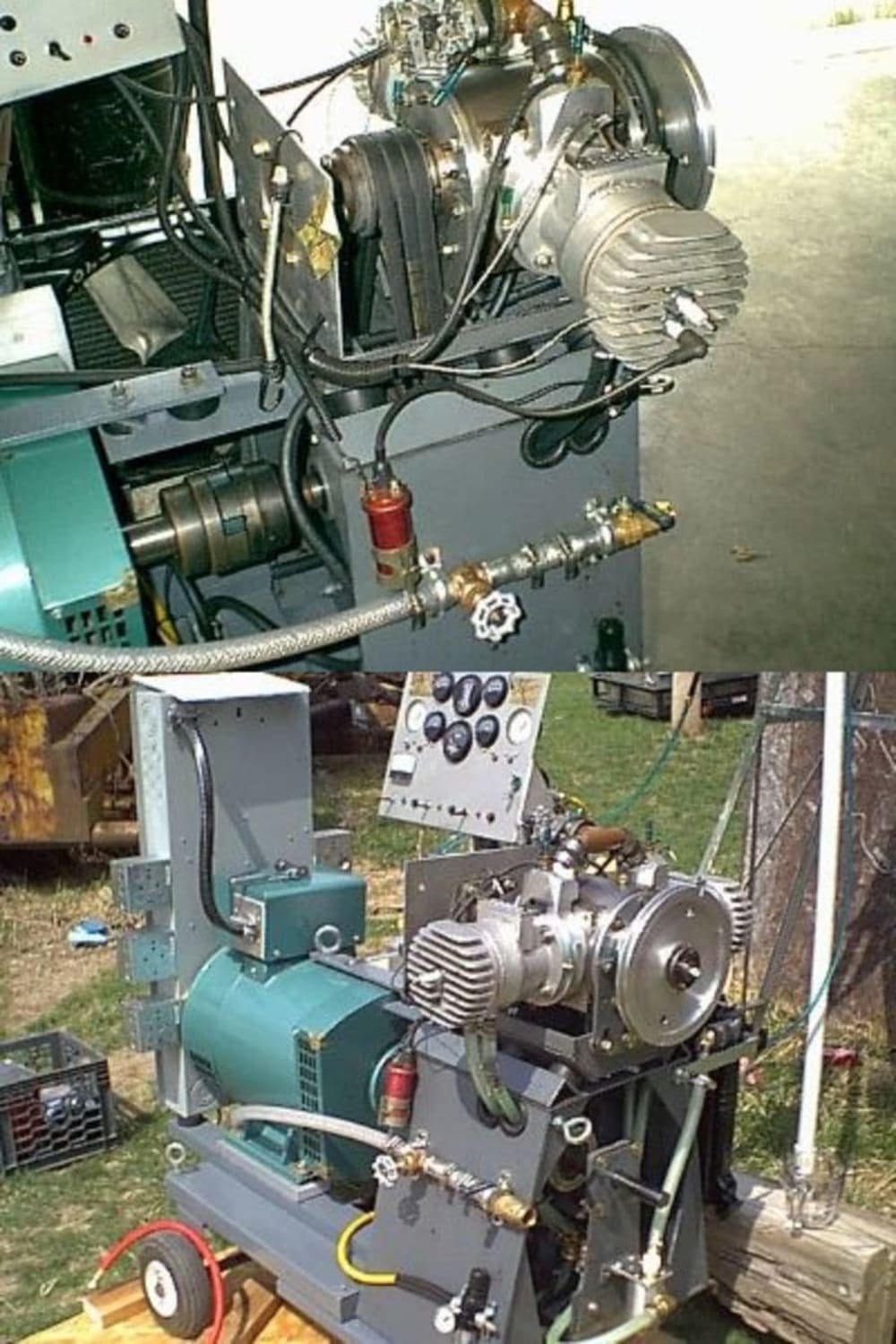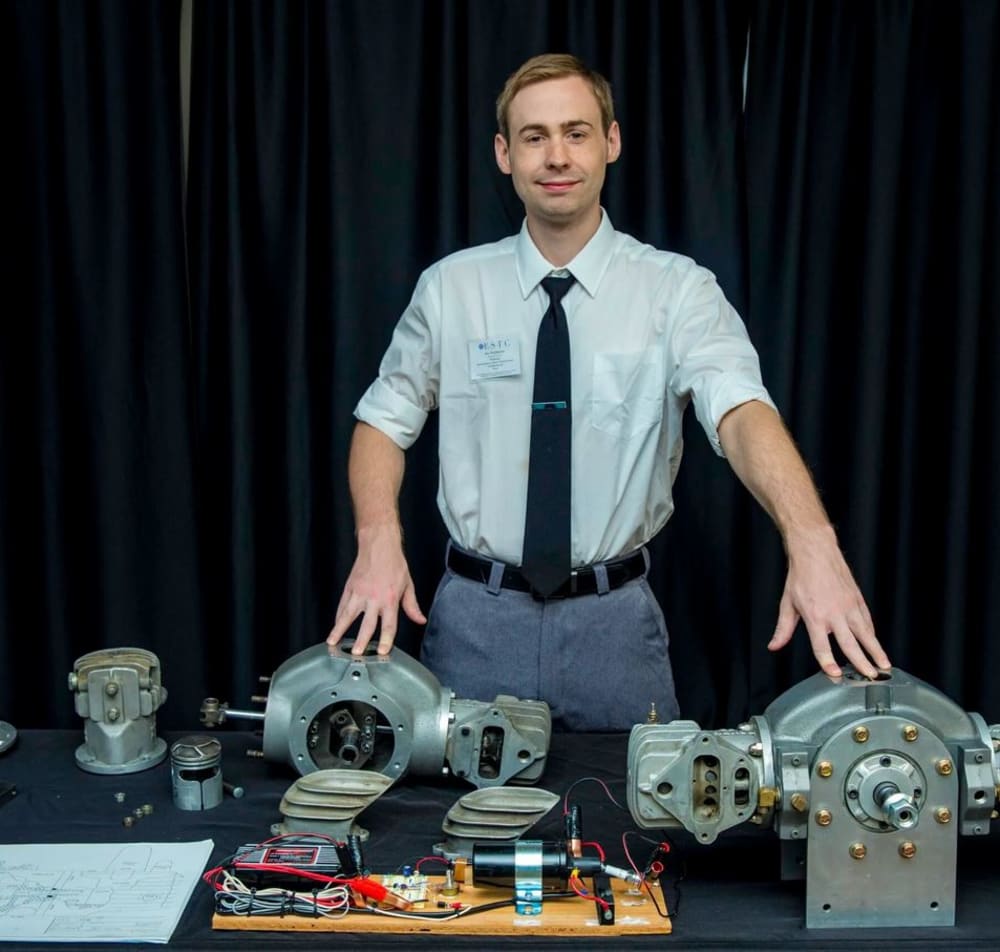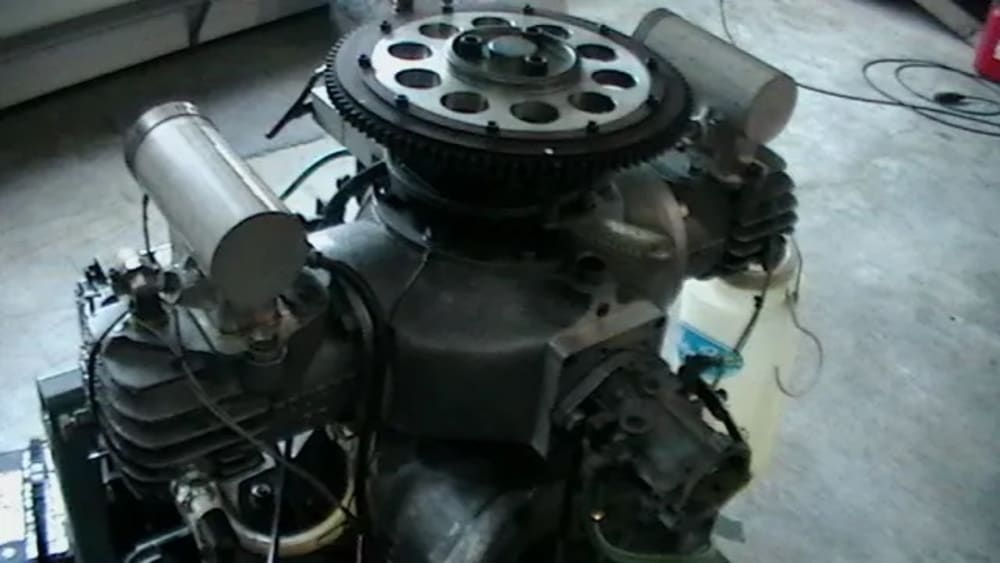
A valveless fickett-jacobs cycle internal detonation engines that boasts pure isochoric constant volume heat addition, giving them the world's highest efficiency for a given stroke to bore ratio. Using a modernized scotch yoke with new technology. Our working prototypes have a static compression ratio of 30 to one and 50 to one, respectively. The merits of this design include near total elimination of piston side thrust, pure sinusoidal reciprocating mass which obviates the need for counterweights in 4 and 8 cylinder designs, and the ability to use both sides of the piston as a combustion chamber for maximum power to weight ratio of up to 4 hp to lbs and 8 hp/lbs, respectively. With only two moving parts, fast, easy, and affordable mass manufacture and maintenance, and supreme reliability by reducing failure nodes, is assured. This will facilitate a more rapid industrialization of developing nations, especially given the engines fuel agnostic capability, including unrefined biomass derived fuels and low grade fuels absent additives without compromising power, emissions, or efficiency. The measured EGT's right out of the exhaust ports are 220 F. under load. There are no complex control systems, HCCI allows for lean burn operation which allows the engine to operate at maximum volumetric efficiency throughout the entire RPM band (idle can be set as low as 100 RPM and can safely spool up to 30,000 RPM) virtually eliminating parasitic pumping losses caused by conventional throttle plates. This allows the engine to dynamically adjust the AFR to facilitate a load based fuel consumption irrespective of RPM, which means the engines torque can arbitrarily spike at any RPM by enrichening the mixture until stoich is reached. Lifespan is projected to exceed 100 thousand hours (approximately 10,000,000 miles) with modern metallurgy, coatings, and nano-tribological technology.
Our 492cc single acting prototype recently completed independent testing by an aviation company for aircraft applications. The test results empirically demonstrated a thermal efficiency of 52% and 152 peak horsepower. This test was conducted using a splash lubricated, naturally aspirated, carbureted arrangement. Fuel used was standard low octane pump gasoline. This test was conducted using our first prototype engine, which weighs 38 pounds fully equipped, giving it a power to weight ratio of 4 hp/lbs. This prototype used exclusively aluminum, iron, and steel for all its components. No polymers, magnesium, fibers, or other exotic components were used to construct this engine. This prototype used an oversquare deflector head piston in a cross scavenged arrangement. Once we implement direct injectors, an undersquare stroke-to-bore ratio, and superior scavenging and porting methods, gapless top rings, move to a double acting arrangement, among other improvements, we conservatively project an efficiency of at least 60%.
A special fuel pump is being co-developed with the engine to allow consumption of any combustible fluid without adjustment by exploiting thermal catalysis to break down combustibles into monatomic hydrogen and CO in-situ on demand using scavenged waste heat to operate. The aforementioned tests omitted this pump, ergo efficiency and versatility will be bolstered after integration.
Video
-
Awards
-
 2022 Top 100 Entries
2022 Top 100 Entries
Like this entry?
-
About the Entrant
- Name:Sky Huddleston
- Type of entry:teamTeam members:Sky Huddleston
Roger Richard
Brady Gupton
Nathan Chou - Software used for this entry:Fusion 360, Draftsight
- Patent status:pending








